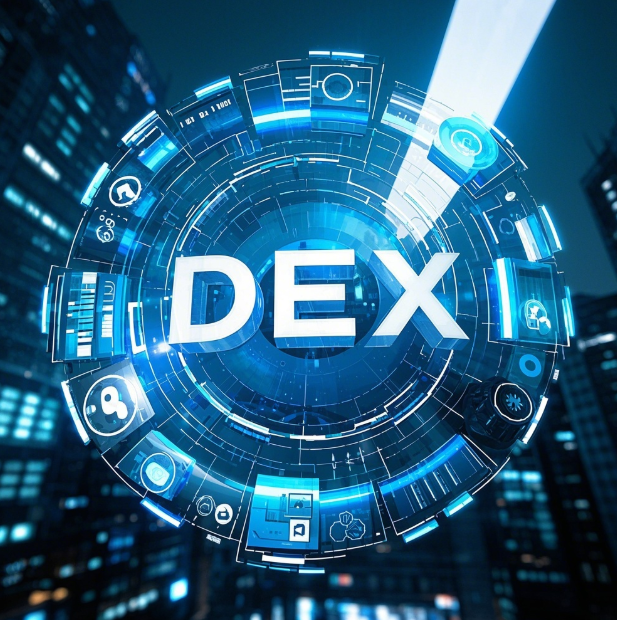Today’s crypto market is booming, but there’s a catch—every transaction you make is publicly visible on-chain. Centralized exchanges keep leaking user data, regulators are tightening surveillance, and no one wants their wallet activity exposed. That’s where Privacy DEXs (decentralized exchanges) come in. Powered by zero-knowledge proofs (ZKPs) and coin-mixing technology, these platforms are surging into the top 10 by trading volume. Let’s break down how they work and why they matter.
Tech Evolution: From "Privacy Coins" to Full Anonymous Trading
Early privacy projects like Monero (XMR) and Zcash (ZEC) pioneered anonymity, but had limitations—slow speeds, high fees, and isolated ecosystems. Modern Privacy DEXs integrate privacy directly into the trading layer, making anonymity seamless.

1. Zero-Knowledge Proofs (ZKPs): Blockchain’s "Confidentiality Agreement"
ZKPs let you verify a transaction without revealing any details. Take Manta Network (built on Polkadot): deposit BTC or ETH into its privacy pool, trade anonymously, then withdraw—all without leaving a trace. New algorithms like Plonk and Halo2 slash verification costs to under $0.10, killing the myth that "privacy = expensive."
2. Coin Mixing: The "Invisibility Cloak" for Funds
Mixing protocols like Tornado Cash (Ethereum) and Wasabi Wallet (Bitcoin) scramble transactions to break traceability. Privacy DEXs take it further—FairySwap (on Findora) auto-generates disposable addresses and mixes signatures with hundreds of decoys, leaving blockchain analysts clueless.
Top Privacy DEXs Compared (2025 Edition)
Here’s a no-nonsense look at key players (unordered):
1. Manta Network (MANTA)
Tech: ZKPs + cross-chain privacy pools
Pros: Anonymous swaps for BTC/ETH, 200%+ APY liquidity mining
Cons: Volatile cross-chain fees, relies on Polkadot relay chain
2. FairySwap (FAIRY)
Tech: MimbleWimble + stealth addresses
Pros: Zero gas fees, compliance-friendly via Findora
Cons: Weak altcoin liquidity
3. Aztec Connect
Tech: ZK-ZK Rollup (double-layer privacy)
Pros: Anonymous access to Uniswap/Aave
Risk: Complex contracts (past $40M exploit, fixed)
4. Secret Network (SCRT)
Tech: Trusted Execution Environments (TEEs)
Pros: Private NFTs/DAOs, 35% staking rewards
Controversy: Centralized hardware reliance

Who’s Using Privacy DEXs?
Institutions: Hedge funds dodging market front-running.
Devs: Paying salaries anonymously, hiding contract logic.
Retail: 93% of users demand financial privacy (2024 survey).
Data shows 470% monthly user growth in 2024, with 68% of trades using ZKP+mixing combos. Bottom line: people are done with on-chain surveillance.
Regulation vs. Anonymity: Can They Coexist?
The U.S. 2024 Virtual Asset Compliance Framework forces DEXs to implement "Travel Rule" KYC. Hardliners like Grin (using MimbleWimble) reject this entirely—hiding amounts and addresses.
Middle-ground solutions like Findora’s selective disclosure let users reveal only necessary data to regulators, balancing compliance and privacy.
The Future: Privacy Tech Arms Race
Privacy DEXs are a battleground for ZKPs, FHE (fully homomorphic encryption), and MPC (multi-party computation). For users, the takeaway is simple: Your keys, your privacy, your choice.

(Risk note: Data as of March 2025. DYOR before investing.)
TL;DR
Why Privacy DEXs? On-chain transparency = risk.
Key Tech: ZKPs (privacy) + Mixing (obfuscation).
Top Picks: Manta (cross-chain), FairySwap (0 gas), Aztec (DeFi bridge).
Users: From whales to normies fleeing surveillance.
Regulation: "Selective disclosure" may be the compromise.
Next time someone says "blockchain is anonymous," hit them with this: Real privacy isn’t default—it’s engineered.
















No comments yet